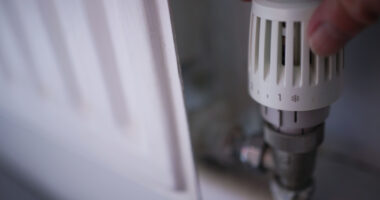
The roots of the dried flower revival, one of this season’s biggest style movements, lie in the new love affair with floral patterns.
At this week’s Decorex, the London trade show that features the key trends for the year ahead, blooms and foliage adorned cushions and wallpapers, as the era of minimalism retreats further into history.
But there are other reasons why dried flowers — which were one of the smartest home accessories of the 1980s — have returned from obscurity, making the latest in a long series of comebacks.


On trend: Dried flower bouquets – which were one of the smartest home accessories of the 1980s – have returned from obscurity
The ancient Egyptians were the first to dry flowers, decorating tombs with sacred lotus blossoms. The drying and pressing of flowers was also a favourite Victorian pastime.
Today, amid growing concern for the planet, dried flowers are increasingly considered to be the eco-friendly choice.
Interiors expert and entrepreneur Alison Cork says: ‘Thanks to new techniques, dried flowers are more beautiful than ever before; they are no longer the second-class citizens in the floral hierarchy.
‘Also the zeitgeist is changing. Dried flowers are seen as more sustainable. People do not like the waste involved in fresh flowers — or how expensive they can be.’
Bouquets, particularly those with orchids or out-of-season roses, can harm the environment, either through the use of pesticides in their cultivation, or through their transportation. About 86 per cent of cut flowers are imported.
Cost-consciousness is another major factor behind the rise of what people are calling ‘brown flowers’, although many displays are colourful, and contain twigs and leaves.
With a little maintenance, a £25 bunch of dried flowers will delight for years, while a fresh flower bouquet may be consigned to the bin only a few days after its delivery.
Anyone who is raising an eyebrow at the return of dried flowers on snobbish grounds will be relieved to learn that they are not accompanied by other 1980s’ accessories, such as floor-sweeping curtains and swagged blinds.
The interiors of the lavish homes in the shoulder-pad TV saga Dynasty were the influence for these pieces, which, for the moment, are not predicted to burst back into fashion… although never say never.


Pick of the bunches: John Lewis offers the Luxury Brights priced at £69.95
Instead, those people who always prefer an understated interior style will choose a dried flower arrangement as a nod to the vogue for florals.
If you prefer neutral shades, Phohm, a business based in Brighton, offers the £45 Ombre, a bunch of Pampas grass, palm leaves and reeds.
Beards & Daisies has the £32.99 Wild Honey, a mix of papaver, plume, protea and ruscus (beardsanddaisies.co.uk). The £50 Sinead from Bloom & Wild contains a blend of blues and autumnal hues.
John Lewis has a wide selection including the Ixia Meadow (£44.99), ideal for a pine table in a cottage kitchen; and the Luxury Brights (£69.95), whose pinks and purples would provide a bolt of colour in a pale bedroom.
If off-the-shelf bunches are not to your taste, making your own dried flower arrangements can provide an outlet for your creativity — and also a form of therapy. This is how it has always been regarded in Japan, where Oshibana, the pressing of flowers, is considered an art form.
Learning the finer points of this craft was part of the training of 16th-century Samurai warriors, who needed better powers of concentration, rather than ways to beautify their homes.
Jennifer Stuart-Smith of Blooming Green, a floristry business, based in Yalding, Kent, which grows all its own flowers using chemical-free methods, says that it is easy to dry your flowers in an airing cupboard or in a warm, dry place in your home.
She says that one of the best guides on the subject is Cut & Dry: The Modern Guide To Dried Flowers, From Growing To Styling, by Caroline Dunster.
Stuart-Smith adds: ‘I had always been a bit sniffy about dried flowers, considering them to be dusty and old-fashioned, but then I started to see how they were being used in interiors in hip East London homes and restaurants.
‘We were also getting requests for wedding bouquets with pampas grasses.
‘I realised this was a trend that we could not ignore — and that we could dry our own flowers and also reduce waste, which is one of the goals of our business. We now supply dried flowers to Planet Organic, the organic supermarket.’
Such is the interest in the DIY approach to dried flower decor that Blooming Green is running £180 one-day courses on the subject, which combine practical skills with mindfulness. The next will be held on November 7.
Besides busting stress, dried flowers also provide an excuse to show off vases which sit unused in the winter months when your garden is no longer an easy source of greenery.










